What is traffic calming?
With the ever-growing number of vehicles, road traffic has certainly increased. This means that pedestrians must be more cautious while crossing roads. Also, town planners and businesses must limit the number of vehicles coming in.
Therefore, traffic engineering offers several steps to counter this enhanced traffic volume. These measures fall into traffic calming. It uses some of the oldest methods available. Yet many of them continue to be effective, even today.
Most of the traffic calming options are a substitute for traffic policemen in many areas. Hence, anyone required to control traffic must understand its calming advantages and applications.
Do you want to know more about this topic? We also have an article talking about the best traffic calming options.
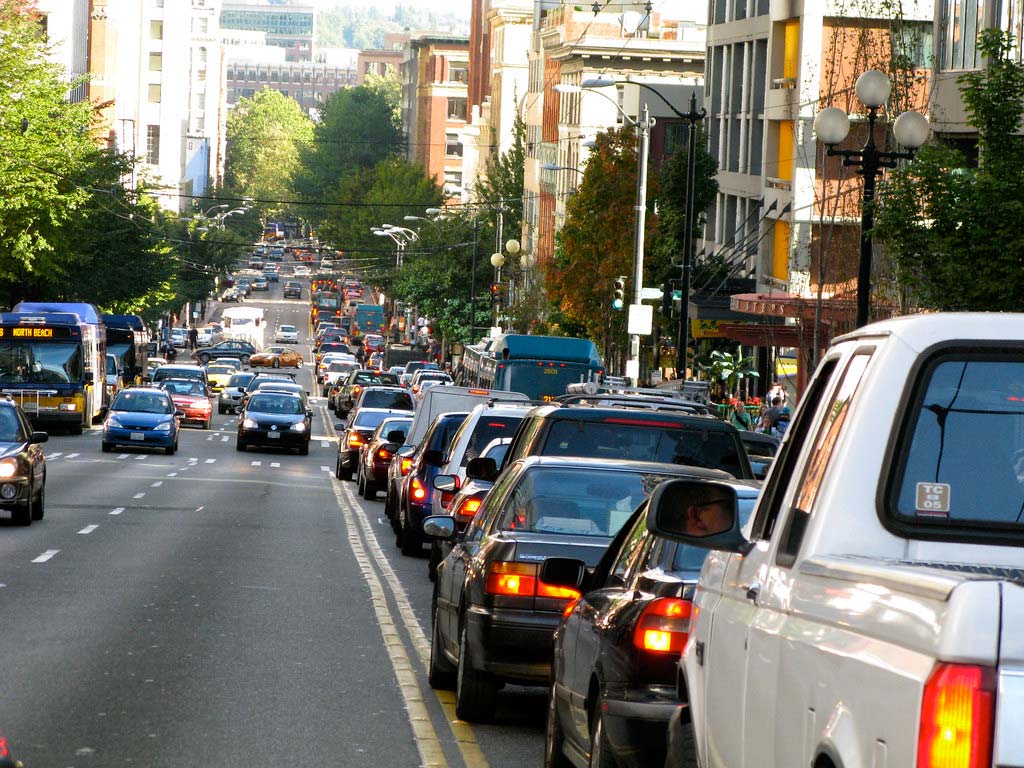

Discover here our full range of Speed Bump products!
The background behind traffic calming
Traffic calming utilizes techniques that are more than a century old. Countries such as the UK relied heavily on reducing the number of vehicles speeding. They thought to not only prevent cars from overspeeding but also to protect the serenity of their streets.
High amounts of traffic bring discomfort to residential areas. Lack of road safety can lead to crashes that amount to thousands of fatalities. Well-calmed traffic can decrease vehicles, resulting in fewer accidents, better air quality, and lesser noise.
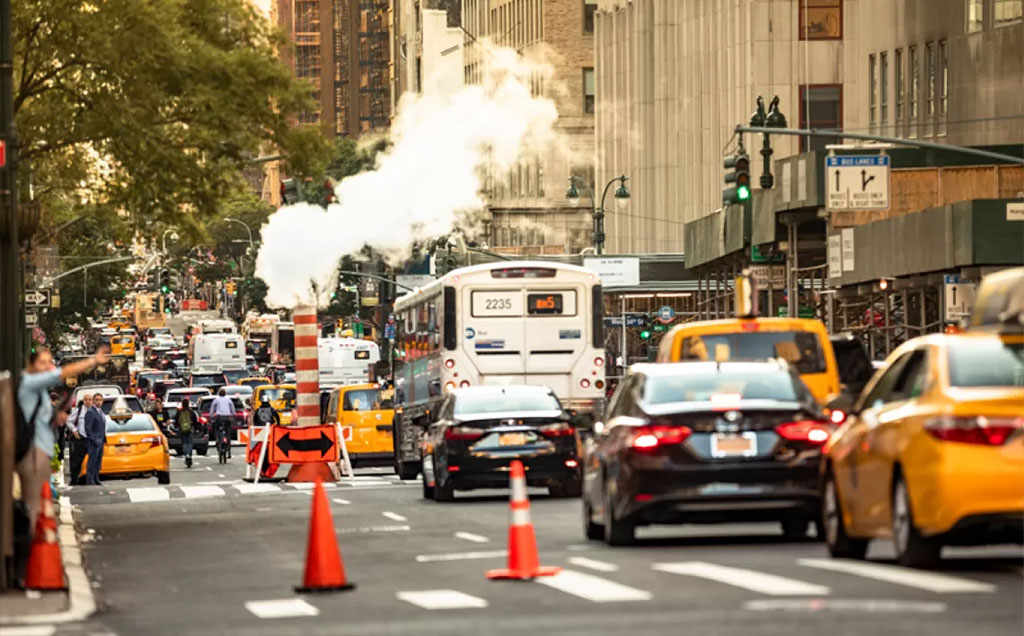
In the latter half of the 20th century, several practices like living streets instead of public carriageways were brought to the UK by other European countries such as Holland and Germany. The dominion also implements Low Traffic Neighbourhoods, which are residential areas with low traffic.
Types of traffic calming techniques
Various means of slowing down traffic have been used throughout the years. Proper surveys are taken by traffic engineers to determine which methods to use.
The use of measures depends on many factors, usually based on the type of motor vehicles used on the road and the nearby population. Drainage is also considered, along with public transportation concerns.
The street types are observed, and the speed limit is to be set accordingly. After the construction has taken place, markings are done, and the road signs are put up.
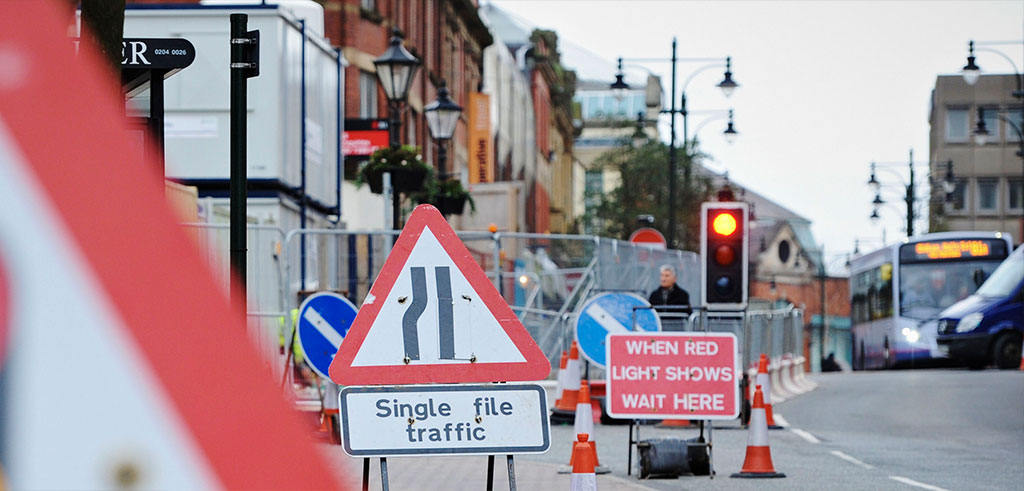
The traffic calming measures are mainly limited to and categorized into the following types:
Horizontal Deflections
These are the engineering measures that shift the oncoming traffic horizontally. They improve safety and prevent collisions by causing vehicles to swerve. They are further classified into:
1. Diversions
A diversion is used to divert and/or break traffic flow into two narrower paths to create a slow zone.
2. Pinch Points
These are small sections where the road narrows. They are usually accompanied by striping for pedestrian crossings.
3. Chicanes
A chicane is a series of additional turns on the road using curbs for traffic management.
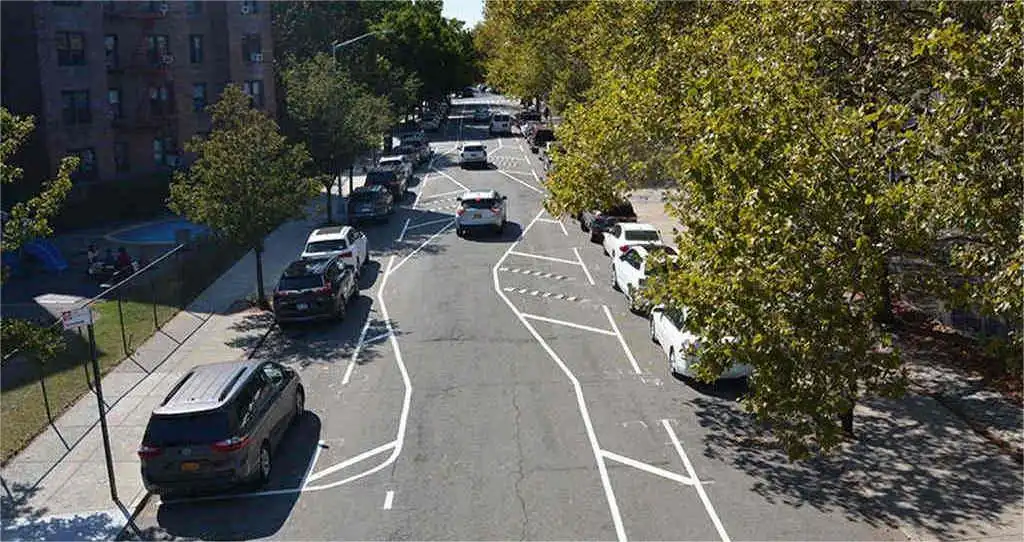
4. Road Narrowing
Roads are narrowed to limit the number of motorists passing through, keeping them safe on the road. A traffic intersection can be narrowed to decrease the traffic count as well. The space gained from narrowing the roadway can be added to the sidewalks or turned into roadside parking.
Examples of road-narrowing practices include:
- Kerb Extension: The simplest road narrowing technique, it adds to the area of the sidewalk. The traffic speed is also reduced, making it easier to cross the road. Kerb or curb extensions are also known as bulbs, chokers and neckdowns.
- Road Diets: A road diet means to reduce the number of traffic lanes by adding measures such as street parking with added parking signs.
- Two-way Streets: More optimal than a one-way street. These allow vehicular traffic to go both ways on the street by splitting up the road.
Road narrowing caters the most to cyclists, public transport users and sidewalk dwellers. Bicycle safety can be enhanced by creating bicycle lanes. The area freed from the tarmac can also be used to create better bus stops. Apart from serving bicyclists and bus users, trees, benches, dustbins, lights, and other improvements can be made on the sidewalk.
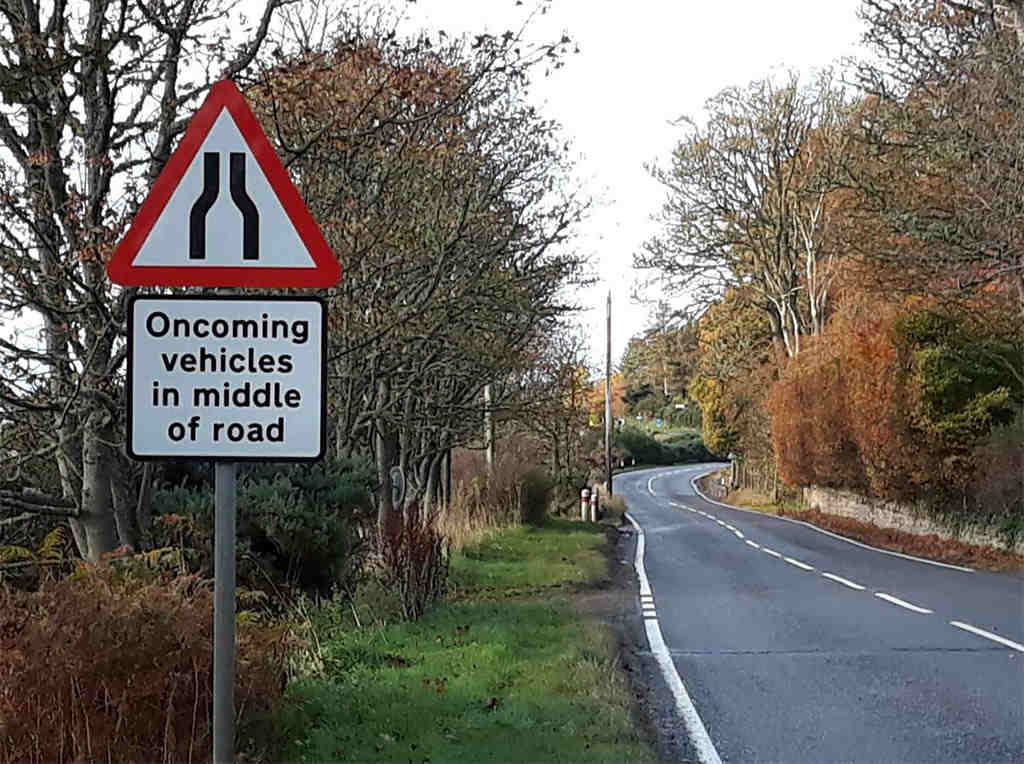
5. Traffic medians and islands
These are also important engineering measures. They can replace traffic signals and can also act as pedestrian refuges. The direction of traffic flow is anti-clockwise.
Roundabouts have been used in the UK since the 1960s and are alternated with traffic circles. They’re often used in place of traffic signals at intersections. Their aesthetic beauty can be increased and hence benefit the neighbourhood via trees or monuments.
Disadvantages: Like horizontal deflections, the general disadvantage of a median, such as a roundabout or a traffic circle, is that it will be ineffective on its own. Hence, medians are used with other traffic calming methods such as chicanes.
Specifically, roundabouts are often chided for causing accidents despite trying to prevent overspeeding for road safety. This is mainly due to the larger number of merging points and uneducated drivers.
Roundabouts can be more dangerous for pedestrians, motorcyclists, and bicyclists alike. They’re more challenging for truck drivers as well.
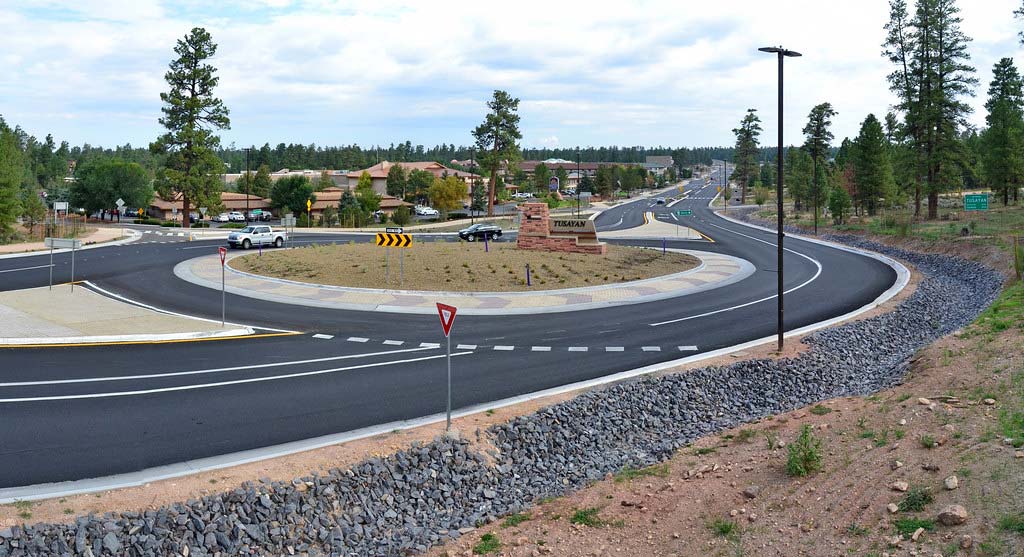
Disadvantages:
Horizontal deflections are not as effective as traffic calming measures unless combined with their vertical counterparts. Also, methods such as chicanes are unsuitable for vehicles such as fire trucks or trucks with a trailer attached.
The cons of road narrowing are experienced when the road deals with long trucks and buses. These measures make it difficult for these heavy motorized vehicles to pass through. This creates congestion, and the severity is realized if an emergency vehicle has to pass through traffic.
You have already read a good part of this article, 👀
We've
got the impression that you like it. 🙂
👇🏻
IF YOU ARE LOOKING TO WORK DIRECTLY WITH A MANUFACTURER,
FEEL FREE TO CONTACT US. WE ARE VERY HAPPY TO HELP!
Vertical deflections
This method is the most effective for traffic control. Each deflection is a raised area that can jolt oncoming traffic upwards.
The genre includes some of the easiest and most cost-effective solutions for traffic calming. These prominent methods bring about low speeds, reduce traffic accidents and prevent speed limit signs from being ignored.
They are the following:
1. Speed Humps
Speed humps are less inclined, allowing vehicles to go over more easily. They can be longer in length or shorter. They’re used in areas where slow-moving traffic is required or in neighbourhoods. They lower speeds to 10-15 mph.
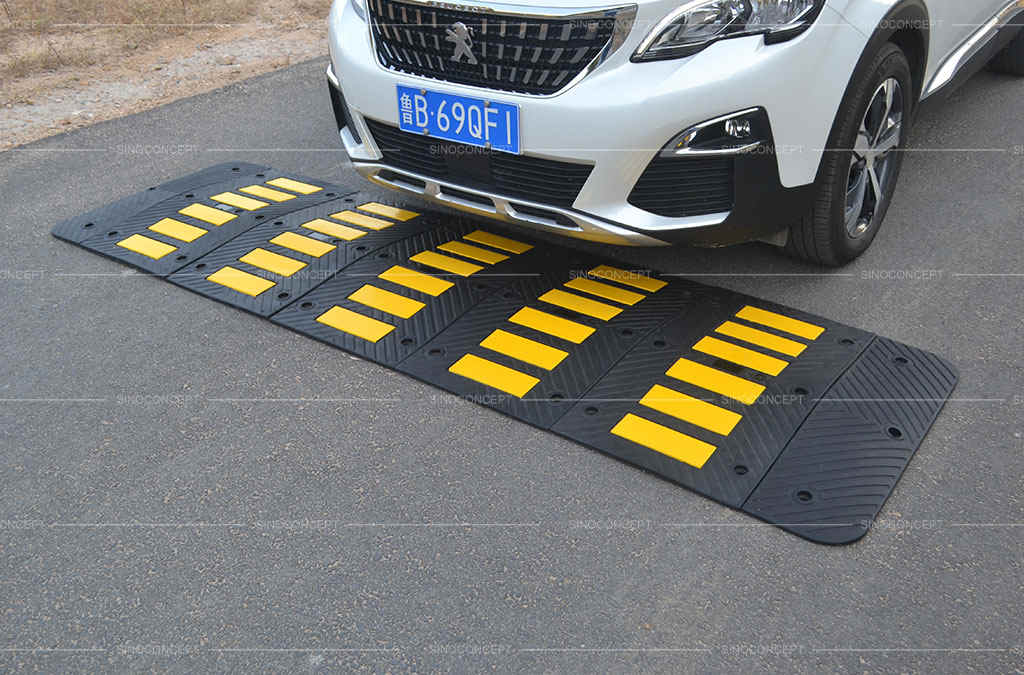
2. Speed Cushions
A bunch of speed humps can be used in a series set up to form a cushion. This helps to maintain a slow traffic flow over a stretch of road. Plus, the vehicles in question don’t have to slow down by much.
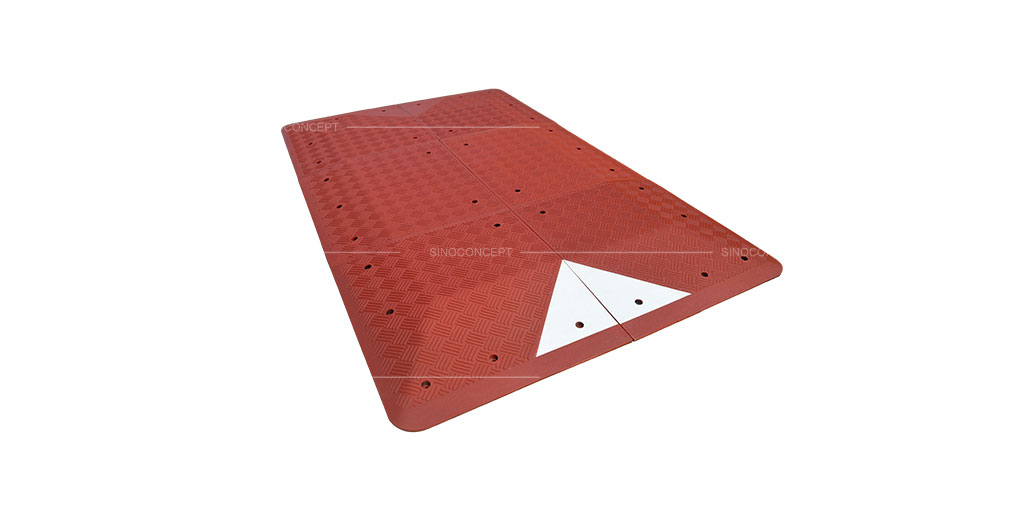
3. Speed Bumps
Speed bumps slow down vehicles much more aggressively. They are much more inclined and taller. They are used when the traffic is required to be even slower. Speed bumps are often used as points where vehicle traffic slows before pedestrian crossings. They bring the speed down to 2-10 mph.
People often use the terms speed humps and speed bumps interchangeably. There are similarities between the two, such as:
- Both are for implementing road safety rules and preventing violations of traffic signs.
- Both are vertical obstacles that the oncoming vehicles must slow down to go over.
- Both can be made of concrete, asphalt, plastic, or rubber.
The similarities end there as both are shaped with different dimensions. Rubber and plastic speed bumps have grown in usage. They have been considered an easier alternative to their asphalt counterparts. Rubber sleeping policemen are also better for vehicles.
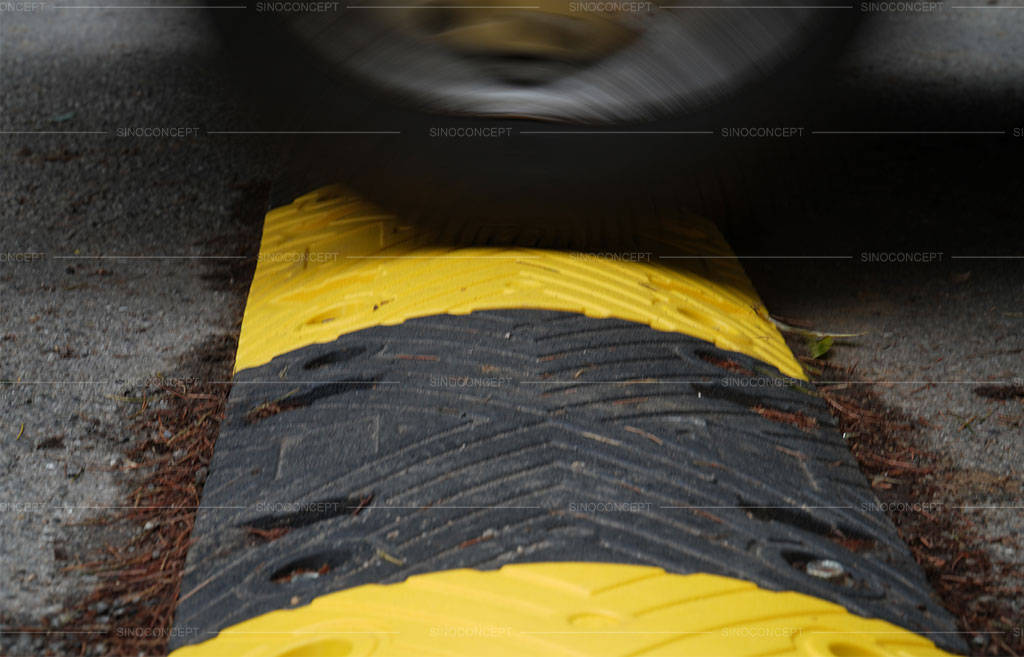
4. Speed Tables
A speed table is another type of raised section for traffic control. It can also be used in slow zones and works by raising the entire wheelbase of the vehicle. This leads to speed reduction of city traffic. Therefore, speed tables are also a way to make oncoming traffic slower and enforce speed limits.
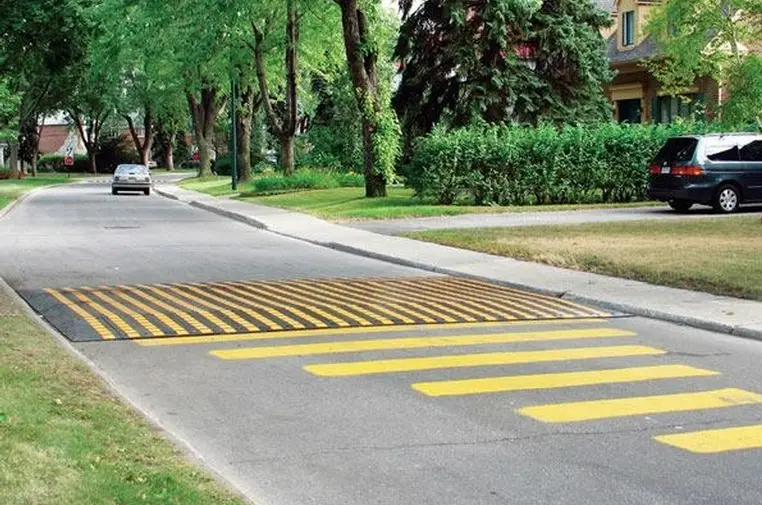
Disadvantages:
While vertical deflections like speed bumps aim to control traffic speed, they have disadvantages. On roads, emergency vehicles are slowed down to calm traffic. Emergency vehicles are often allowed to violate traffic rules. But in this case, traffic fatalities are seen as the bigger picture.
These bumps in the road are responsible for many motor vehicle crashes. These speed bumps or humps can cause the driver to lose control of the car if they aren’t properly marked.
This is because these sleeping policemen don’t absorb stress very well. The impact can damage the vehicle’s suspension if it hasn’t slowed down as it should’ve. Many of these road bumps also lose their respective visibilities during nighttime. But the regular speed bump isn’t the only hazard for motorists.
Even concrete/asphalt speed humps provide us with side effects to speed control. Driving fast over a series of regular speed humps also causes wear and tear in a vehicle. Therefore, concrete speed humps must be driven over with caution.
This is why rubber and plastic speed breakers are being considered more. They’re cheaper to install and are removable. Rubber speed bumps also overshadow plastic ones because of their better compression ability. This makes them safer for cars and helps them last longer.
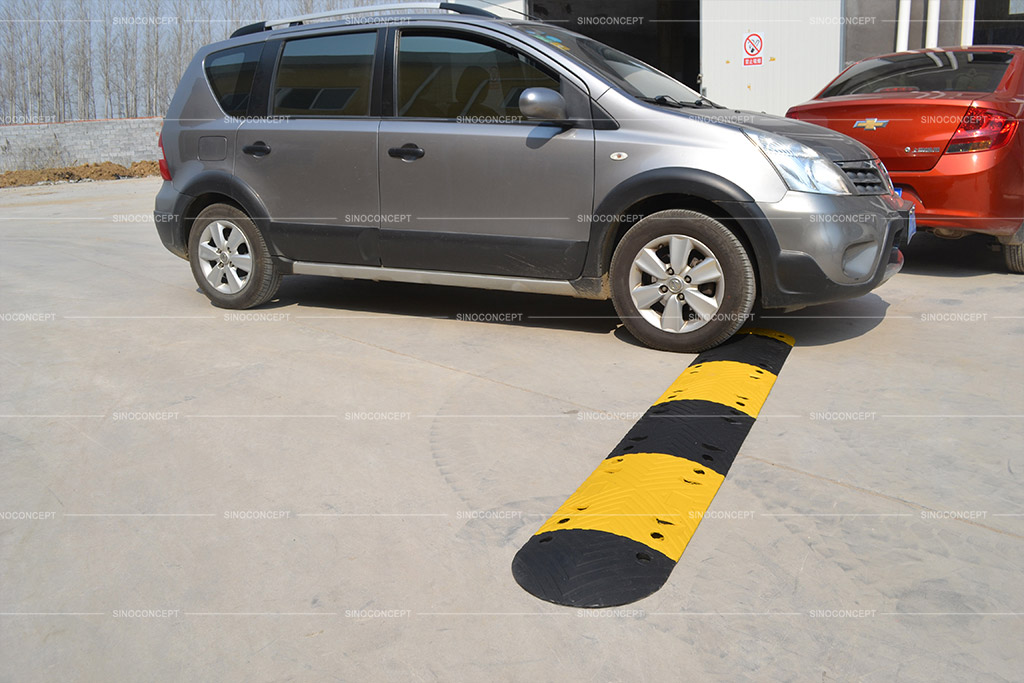
Other Traffic Calming Systems
The number of traffic calming systems has increased with time to protect pedestrians and cyclists. This is because of the increase in traffic and, hence, the number of people breaking the speed limits. Digital methods such as traffic signals are some of the most prominent technologies available.
Intelligent transport systems introduced speed cameras to fine those who don’t obey the speed limit. Every British knows how many there are for highway safety, and many have complained about them. They’re a costly setup and are also prone to acts of vandalism.
Other obstacles used to calm traffic include diverters, cul-de-sacs, and pedestrian zones.
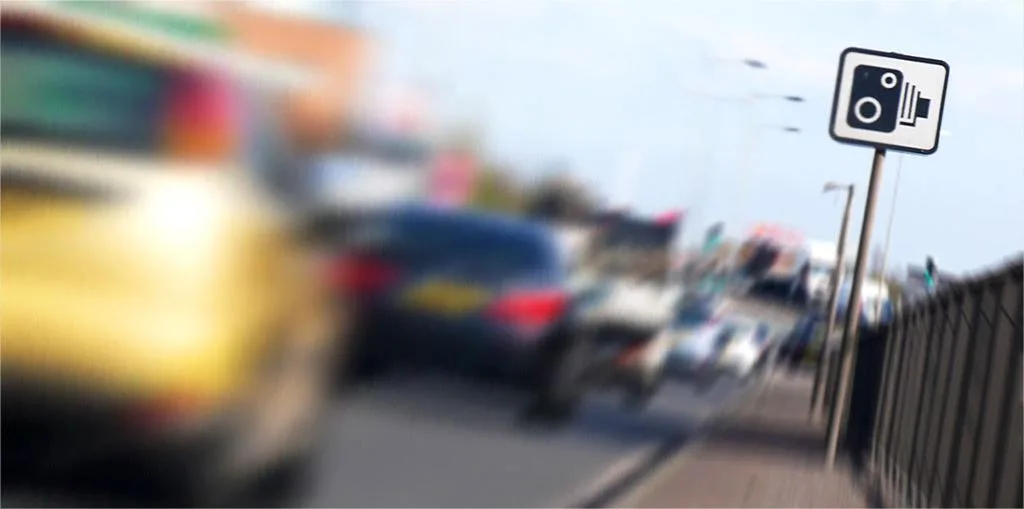
In conclusion
Traffic calming has worked well in implementing the rules of the road. Even the most primitive transportation system will have traffic calming measures for road traffic safety.
These techniques are part of every road construction project to discourage motor vehicles from speeding.
Several types of traffic calming techniques exist and are very often used together. Vertical deflections, which include speed breakers, are the most effective traffic-calming techniques.
Nowadays, rubber speed bumps and speed humps have proven to be more effective and safer traffic control methods.
👇🏻
IF YOU ARE LOOKING TO WORK DIRECTLY WITH A MANUFACTURER,
FEEL FREE TO CONTACT US. WE ARE VERY HAPPY TO HELP!




















